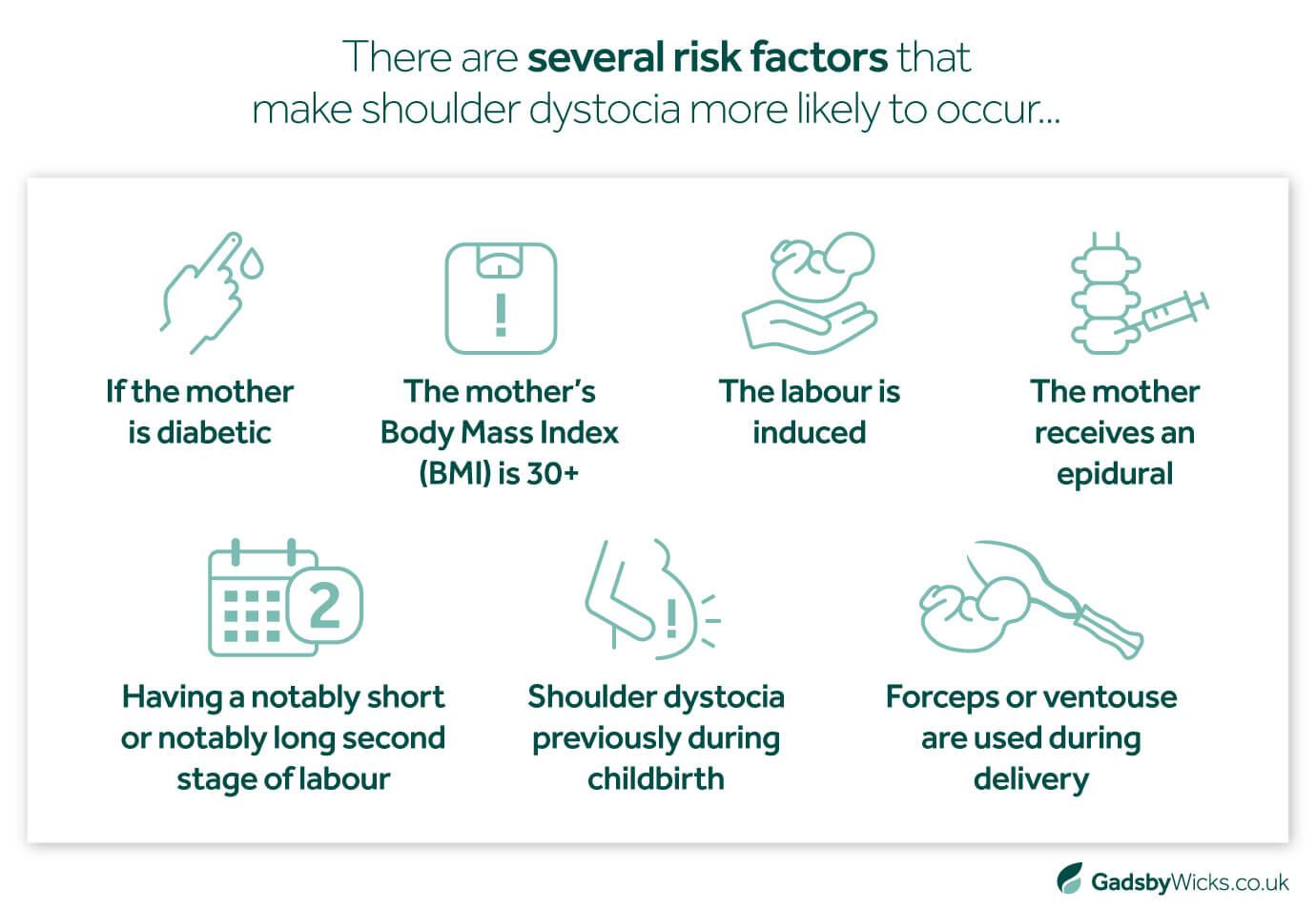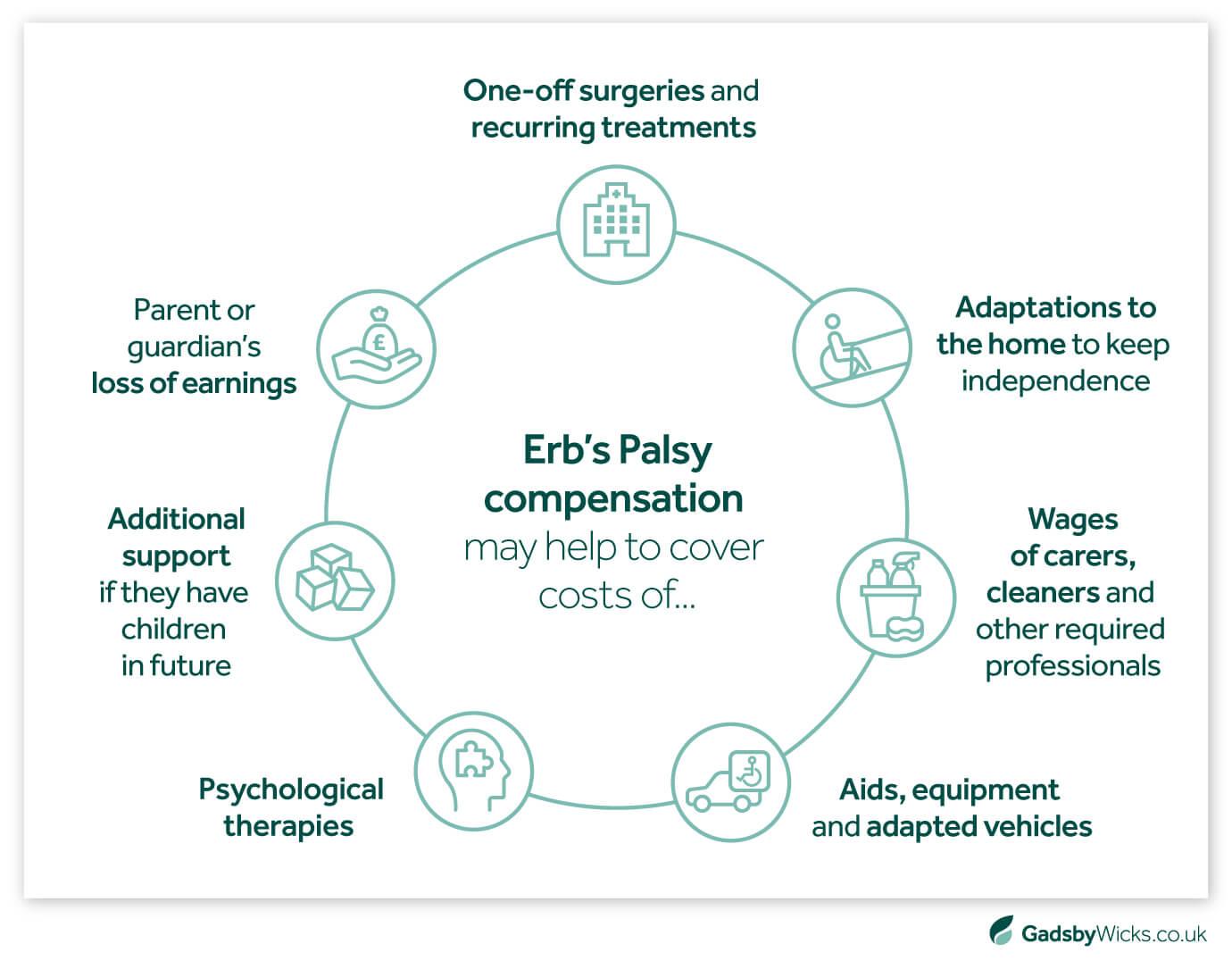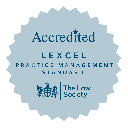- Home >
- Birth Injury Claims >
- Erb’s Palsy Claims
Traction injuries at birth are often completely avoidable, and Erb’s Palsy can restrict someone’s lifelong mobility. If mistakes during childbirth caused your baby to be born with this condition, our solicitors can help you get the justice you deserve.
While we can’t turn back time, we can ensure those responsible for your child’s suffering are held accountable, and secure compensation to support your child’s future – something we have done for claimants for over 30 years.

Do you have an Erb’s Palsy claim?
Erb’s Palsy is where nerve damage to the brachial plexus causes paralysis in a baby’s arm. In the most severe cases, this can greatly limit a person’s arm’s movement, function and growth, burdening them for the rest of their life.
Erb’s Palsy is often caused by excessive force used by healthcare professionals during birth. If a negligent act caused your child’s injuries, then we may be able to help you claim compensation to support their long-term quality of life.

The specialist Erb’s Palsy claims solicitors for Essex & East Anglia
Since 1993, we have won millions in compensation to help make our clients’ lives a little easier, whether to cover ongoing treatments or pay for adaptations to the home.
Our legal experts’ strong track record in Erb’s Palsy claims ensures you get closure over what happened to your child, and a settlement that secures your financial future. Trust our team to fight for the outcome you deserve – without you ever needing to pay us a penny upfront.
What does our Erb’s Palsy claims process look like?

A free initial consultation
Call us, request a callback or complete our online form and we’ll assess if you have a valid medical negligence claim.

Funding your claim
Discover the ways we can fund your claim without you paying a penny at any stage of the process.

Investigating evidence
We gather medical records, witness statements and more to learn what happened to you and prove your claim.

Instructing independent medical experts
We work with impartial, experienced medical experts to establish whether your injuries were due to substandard medical care.

Valuing your claim
We assess your health and financial losses to accurately estimate how much compensation your claim is worth.

Presenting your case
We contact the Defendants and the Courts on your behalf to set out your allegations and receive a response.

Negotiating a settlement
We work to achieve a fair settlement for you outside the courtroom – this is how 96% of our cases end.

Preparing for Trial
If we must proceed to Trial, we fully prepare you for what to expect so you receive the right result in court.
FAQs about Erb's Palsy claims
What is Erb’s Palsy?
Erb’s Palsy is a form of obstetric brachial plexus disorder, and is caused by damage to the nerves during birth. Brachial plexus injuries affect the network of five primary nerves responsible for movement and feeling in the shoulder, elbow, wrist and hand.
Damage to these nerves can leave a child with a disability, the form and severity depending on the nerves that are damaged. It is estimated that 1-2 babies out of every 1,000 will be born with Erb’s Palsy.
How is Erb’s Palsy caused?
When a midwife or obstetrician is concerned about a birth for one reason or another, there can be increased pressure to get the baby out quickly. Shoulder dystocia is a prominent example of an obstetric emergency – when one or both of the baby’s shoulders get stuck during birth, typically against the pelvis of the mother, this places the baby at risk of oxygen deprivation.
While there are several approved procedures to ensure smooth delivery, if the person delivering the baby pulls too hard, that can stretch the nerves in the baby’s shoulder, which could cause Erb’s Palsy.

Risk factors that make Erb’s Palsy more likely include:
- The mother is diabetic
- The mother’s Body Mass Index (BMI) is 30+
- The labour is induced
- The mother receives an epidural
- The second stage of labour is very short or long
- Shoulder dystocia occurred in a previous birth
- Forceps or ventouses are used during delivery
Screening mothers before delivery and offering a caesarean section can prevent birth injuries like this from occurring.
When is medical negligence to blame for Erb’s Palsy?
Sometimes nothing can prevent a baby from being born with Erb’s Palsy. The natural birth process can lead to excessive stretching of the baby’s shoulder.
Approximately a third of Erb’s Palsy cases affect the baby’s posterior shoulder (the shoulder delivered last). In these cases, the injury will rarely be due to the actions of a healthcare professional. If the injury is sustained by the anterior shoulder (the shoulder delivered first), this is more likely due to substandard care.
In the event of an obstetric emergency, midwives and obstetricians should be trained in the appropriate manoeuvres and techniques to manage these situations and avoid significant harm to the baby. These include:
- The McRoberts Manoeuvre
- The Gaskin Manoeuvre
- Suprapubic pressure
- An episiotomy
If a healthcare professional fails to carry out these actions as intended, there is an avoidable delay, they apply excessive force, or they have not picked up on warning signs early enough to prevent an injury, this may be grounds for an Erb’s Palsy compensation case.
In addition, a failure to recommend a caesarean section, or refusal of a mother’s request for a caesarean section when there is a potential risk of shoulder dystocia, can also be considered negligent.
How long do Erb’s Palsy claims take to settle?
We would typically anticipate an Erb’s Palsy claim to take between two and five years to reach a final settlement. During this time our solicitors will guide you through every stage of the claims process, determining:
- Whether there was a breach of duty of care by a healthcare professional
- The claimant suffered physical, psychological or financial harm
- The claimant received their injuries as a result of the negligence they endured
We will also work with relevant experts to quantify the value of a birth injury claim based on the injuries sustained, how altered the claimant’s prognosis, and the long-term support they will need based on the severity of their Erb’s Palsy.
How long do you have to make an Erb’s Palsy claim?
As the claimant in an Erb’s Palsy claim will typically be under 18, they will have until their 21st birthday to make a claim. There is no time limit for anyone who is mentally incapacitated.
In special circumstances, the courts sometimes allow claims outside these time limits. However, we always advise that there is no benefit to delaying an injury compensation claim, and you should get in touch with legal services as soon as possible.
What is the average settlement amount for Erb’s Palsy claims?
The settlement for an Erb’s Palsy claim can vary significantly. It depends on several factors:
- How severe the injury was to the claimant
- How much functionality the claimant has lost due to their nerve damage
- How permanent the nerve damage is expected to be
- The extent of the care, equipment and therapies the claimant needs to help them live as comfortable and fulfilling a life as possible
A temporary, transient weakness of the arm that will recover over time would therefore be valued substantially lower than a case where the claimant will require specialist care and equipment for the rest of their life.
In circumstances where the claimant will require long-term care, it is common for compensation to be awarded as both a lump sum and annual periodic payment orders (PPOs). These annual payments help ensure that the claimant will always receive the financial support they need to cover their care requirements.
Contact our expert Erb’s Palsy claims solicitors
If you or a loved one have experienced negligence leading to Erb’s Palsy and would like to discuss your options, our team is here to listen and advise you on your next steps.

Lexcel accredited medical negligence claims solicitors
We are proud to be a Lexcel-accredited practice. The accreditation is a mark of quality and comes directly from the Law Society.
A recent assessment described us as a “Centre of Excellence” and we continue to operate to the highest standards across all main areas of our field. These include client care, case management, financial management, structure and strategy, people management, risk management, information management and file management.






